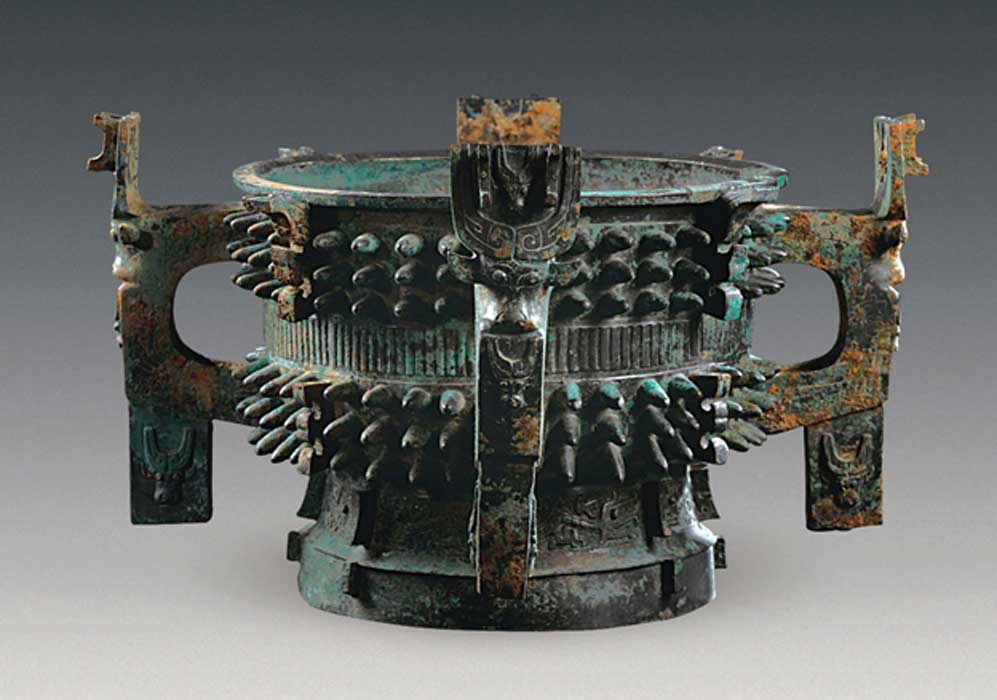Bronze Artifacts Found in 3,100-Year-Old Tomb Tell of Dynastic Take Over
Chinese archaeologists have discovered ritual tureen and “soup bowls” next to a badly decomposed body in a Zhou dynasty-era tomb. Among the remains there were also uncovered two wine vessels, which experts suggest were probably used as part of the funerary rituals.
Macabre Discovery Accompanied with Stunning Bronze Artifacts
The archaeological mission in China discovered a 3,100-year-old tomb – Tomb M4 as the archaeologists named it – filled with a stunning collection of bronze vessels and "soup bowls." The burial site was discovered in Baoji City in Shaanxi province, an area that previously stood as the capital of the Zhou dynasty. The excavation work was launched back in 2012, after construction workers unearthed bronze vessels while they were constructing residences. According to the researchers, at least 56 more ancient tombs have been discovered near Tomb M4 as Live Science reports.
All those bronze objects appear to have been in the service of the now horribly decomposed body of an unidentified person that was found in the tomb. Along with the bowls and the body, archaeologists also unearthed a “four-handled tureen” adorned with dragons, birds and 192 spikes. "The occupant of Tomb M4 was most likely of elite status, and could potentially be a high-ranking chief or the spouse of a chief," wrote Zhankui Wang, the director of the archaeological team that collaborates with the Shaanxi Provincial Institute of Archaeology. Some experts go a step further and suggest that the newly found vessels could possibly be trophies of war given to the individual buried in the tomb.
- An honored Zhou Dynasty warrior, buried with a chariot and horses, has been unearthed in China
- Thousands of War Captives Enslaved for Years Before Being Slain as Sacrifice in Prehistoric China
- Tombs, Treasures, and 2,000-year-old Bronze Sword Unearthed in China

The food vessels were mostly found in niches in the wall of the tomb. Image: Courtesy of Chinese Cultural Relics
A Period of Conflict Between the Zhou and the Shang
The Zhou people of China were battling against the Shang at the time of the burial, the archaeologists suggest. Experts noticed the names of many important Shang clans on the vessels they discovered, a fact that indicates that they initially belonged to the Shang. It’s very possible that these vessels were looted from the Shang by the Zhou. "After conquering the Shang dynasty, the Zhou king distributed the plundered war spoils to the military officers with great achievements, and these spoils usually included bronze vessels," the archaeologists wrote, according to Live Science.
Shang and Zhou Dynasties: The Bronze Age of China
The long period of the Bronze Age in China, which began around 2000 BC, saw the growth of a civilization that would be sustained in its essential aspects for another 2,000 years. There were possibly several early centers of bronze technology, but the area along the Yellow River in present-day Henan Province emerged as the center of the most advanced and literate cultures of the time and became the seat of the political and military power of the Shang dynasty (1600–1050 BC), the earliest archaeologically recorded dynasty in Chinese history.
- 3000-year-old bronze sword discovered in China
- Two-face bronze head unearthed in central China
- 5-meter long ancient scroll painting is one of the most precious treasures of China

One of the more novel finds was this deer shaped wine holder, illustrating high level of Chinese skills in Bronze Age metalworking. (Image: Courtesy of Chinese Cultural Relics)
As the Metropolitan Museum of Art reports, the Shang dynasty was conquered by the people of Zhou, who came from farther up the Yellow River in the area of Xi’an in Shaanxi Province. In the first years of the Zhou dynasty (ca. 1046–256 BC), known as the Western Zhou (1046–771 BC), the ruling house of Zhou exercised a certain degree of “imperial” power over most of central China. With the move of the capital to Luoyang in 771 BC, however, the power of the Zhou rulers declined and the country divided into a number of nearly autonomous feudal states with nominal allegiance to the emperor. The second phase of the Zhou dynasty, known as the Eastern Zhou (771–256 BC), is subdivided into two periods, the Spring and Autumn period (770–475 BC) and the Warring States period (475–221 BC).
During the Warring States period, seven major states contended for supreme control of the country, ending with the unification of China under the Qin in 221 BC.
Although there is uncertainty as to when metallurgy began in China, there is reason to believe that early bronze working developed autonomously, independent of outside influences. The era of the Shang and the Zhou dynasties is generally known as the Bronze Age of China, because bronze, an alloy of copper and tin, used to fashion weapons, parts of chariots, and ritual vessels, played an important role in the material culture of the time. Iron appeared in China toward the end of the period, during the Eastern Zhou dynasty.
Top image: The four-handled tureen adorned with dragons, birds and spikes. (Chinese Cultural Relics)

















